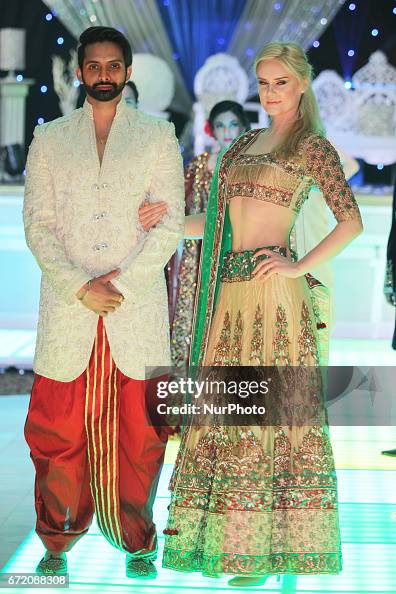Most Current Patterns in Eastern Wear Pakistan : A Comprehensive Guide for 2024
Most Current Patterns in Eastern Wear Pakistan : A Comprehensive Guide for 2024
Blog Article
Experience the Sophistication of Typical Eastern Attire
Embark on a journey with the detailed world of standard Eastern outfit, where each garment narrates woven with social splendor and historic value. From the lively tones of a Chinese qipao to the regal beauty of a Pakistani shalwar kameez, these garments provide a look into a globe where workmanship fulfills creativity. The blend of extravagant textiles and fragile needlework techniques produces a tapestry of style that goes beyond borders and time. Join us as we untangle the tricks behind these charming items and find the allure of Eastern attire that has captivated generations.
Background of Eastern Attire
Eastern outfit has an abundant background that dates back centuries, mirroring the diverse cultures and traditions of regions such as Asia and the Middle East. In Asia, typical clothes differs greatly from the vibrant saris put on in India to the elegant kimono of Japan.
Throughout history, Eastern outfit has not just served as a type of clothing yet likewise as a sign of cultural identification and heritage. Today, Eastern clothes continues to develop, blending traditional components with modern-day fashion patterns to create ageless and unique styles.
Significance of Embroidery
Needlework plays a vital role in traditional Eastern clothes, including intricate information and cultural importance to garments that have been passed down through generations. In Eastern cultures, embroidery is not simply decorative however holds deep symbolic significances. Each stitch and pattern can communicate stories, beliefs, and even social standing.
The art of embroidery in standard Eastern clothes is a labor-intensive procedure that requires skill and patience. Very competent craftsmens thoroughly hand embroider detailed styles onto materials using techniques that have actually been refined over centuries. These embroidered designs usually mirror the rich social heritage of the region they stem from, showcasing concepts influenced naturally, mythology, or historic occasions.

Lavish Fabrics Made Use Of
Extravagant materials play an essential function in enhancing the elegance and opulence of typical attire throughout diverse Eastern societies. Silk, renowned for its softness and luster, is a preferred option for many traditional garments because of its lavish feeling and ability to drape with dignity. In countries like India, China, and Japan, silk has a lengthy background of being made use of in typical outfit, symbolizing wide range and standing.
An additional commonly used luxurious material is brocade, characterized by complex patterns woven right into the product. Brocade adds a touch of class to garments and is often seen in ritualistic attire and official wear. Velour, with its plush texture and rich appearance, is also a preferred option for typical attire in Eastern societies, specifically for unique celebrations and festive occasions.
In addition, chiffon, satin, and fabric are often used for their light-weight and flowing high qualities, adding a sense of delicacy and elegance to garments. These extravagant textiles not only elevate the visual appeal of conventional Eastern outfit yet additionally contribute to the general appeal and charm of the wearer.
Craftsmanship Techniques
Standard outfit in numerous cultures showcases flawless workmanship strategies that are passed down through generations, highlighting the ability and artistry associated with producing these elegant garments. Each needlework, stitch, and embellishment is carefully crafted to produce ageless items that personify the social heritage and traditions of the region. The workmanship methods made use of in standard Eastern clothes usually involve complex handwork, such as hand weaving, hand needlework, and hand beading, which call for accuracy and interest to detail.
Artisans that specialize in these techniques undertake years of training to excellent their abilities and understand the typical techniques of garment building and construction. The use of top notch materials incorporated with expert workmanship causes garments that not just look visually stunning however also stand the examination of time. The commitment to maintaining these craftsmanship techniques makes sure that each piece of conventional Eastern clothing is a masterpiece, mirroring the rich social background and heritage of the region.
Classic Beauty and Elegance

The elaborate needlework, delicate beadwork, and extravagant textiles used in conventional Eastern outfit contribute to its unequaled beauty. The meticulous workmanship gave through generations makes certain that every item exudes and informs a tale class and elegance.
Moreover, the classic silhouettes and stylish draping of standard Eastern clothing contribute to home its enduring appeal. The moving lines and elegant styles create a feeling of harmony and equilibrium that is both visually appealing and psychologically exciting.
Essentially, the ageless elegance and charm of standard Eastern clothes act as a testimony to the skill and virtuosity of the artisans that dedicate their lives to maintaining these elegant sartorial practices. - eastern wear pakistan
Conclusion
To conclude, the style of conventional Eastern attire is a testament to the rich background, social significance, and intricate craftsmanship of the region. From the intricate needlework to the elegant textiles and timeless beauty, each garment narrates and mirrors the social identity of its origins. Accepting Eastern clothing permits one to appreciate the artistry and beauty that have actually been given through generations, producing really exquisite and captivating pieces.
Embark on a journey through the complex world of standard Eastern clothes, where each garment tells a story woven with social splendor and historic significance.Embroidery plays an important role in conventional Eastern outfit, including detailed information and social significance to garments that have actually been passed down with generations.Glamorous fabrics go to the website play a critical duty in boosting the sophistication and opulence of traditional attire throughout diverse Eastern societies. The workmanship strategies made use of in standard Eastern outfit typically involve detailed handwork, such as hand weaving, hand needlework, and hand beading, which need precision and attention to detail.
In verdict, the beauty of conventional Eastern outfit is a testament to the abundant background, cultural importance, and intricate craftsmanship of the area.
Report this page